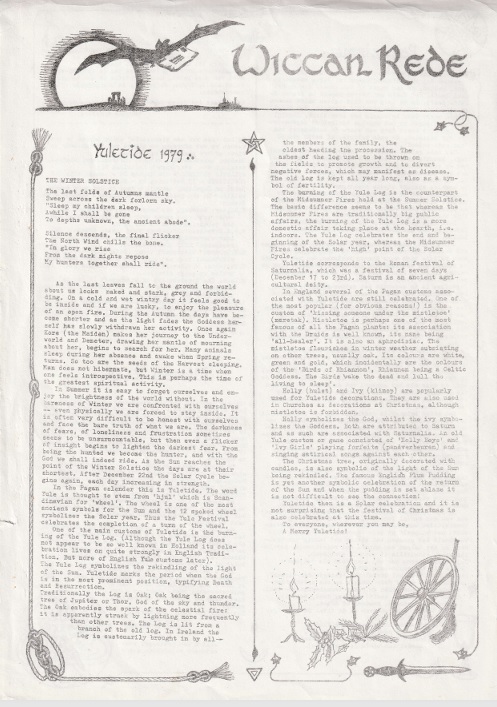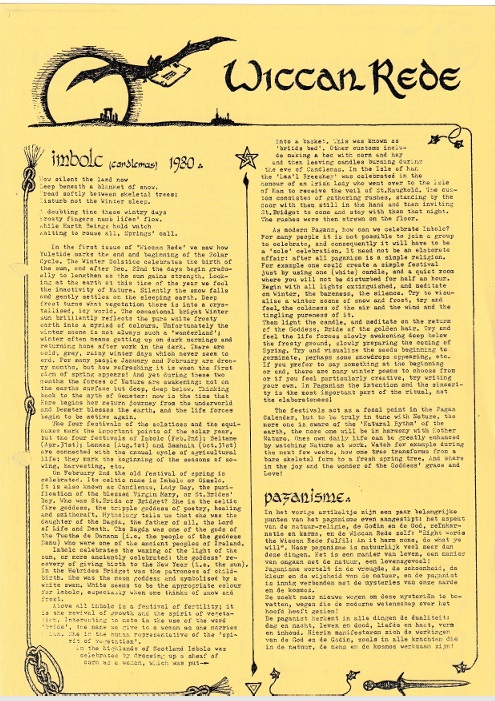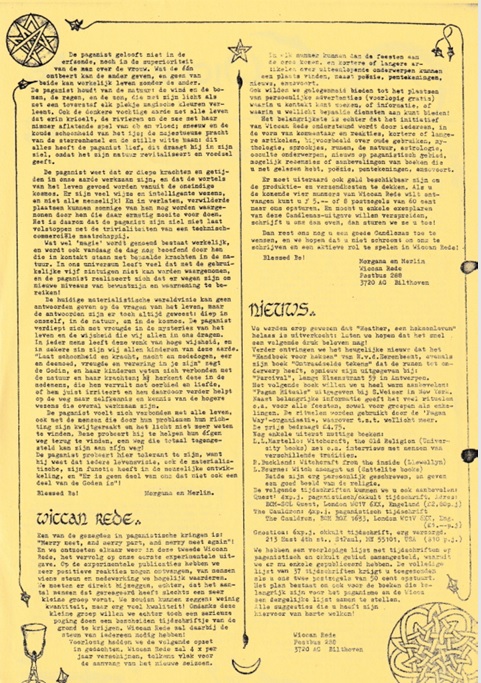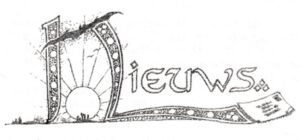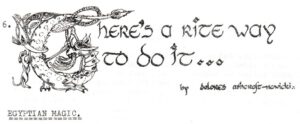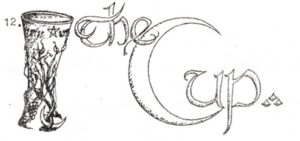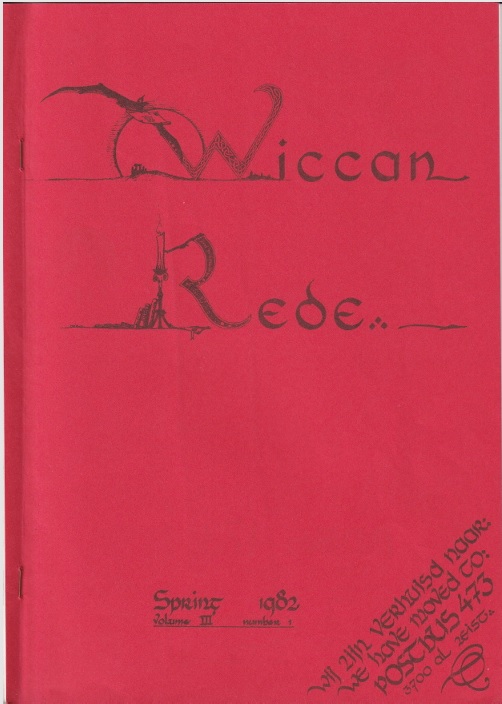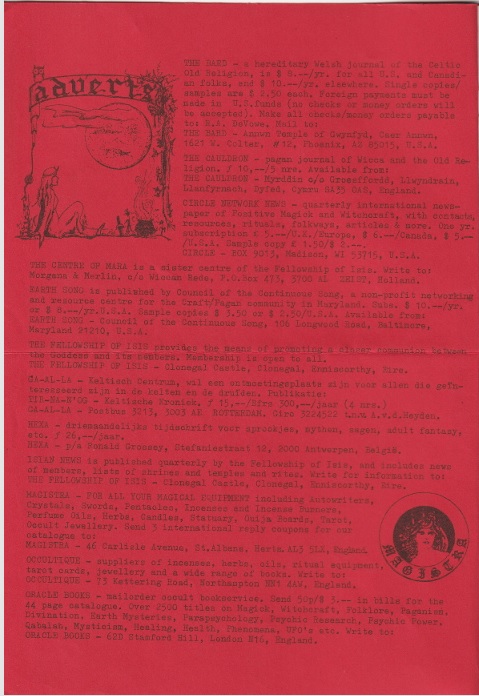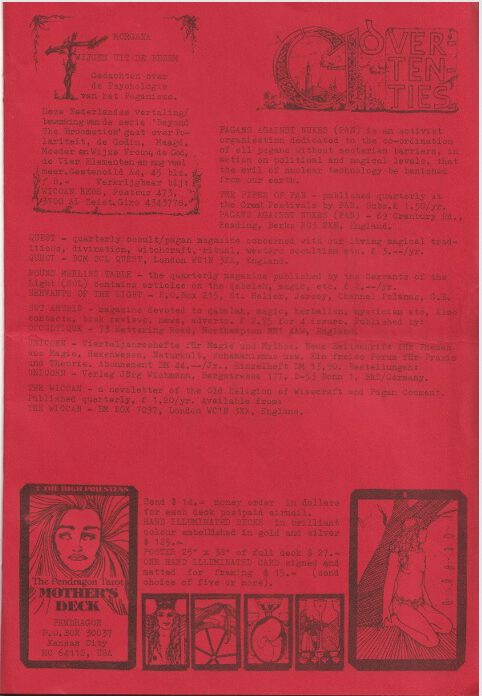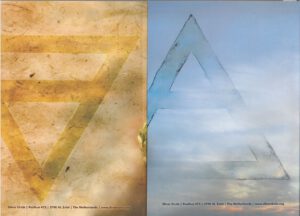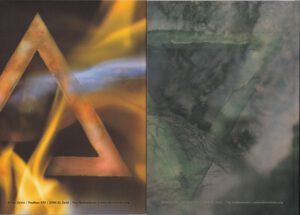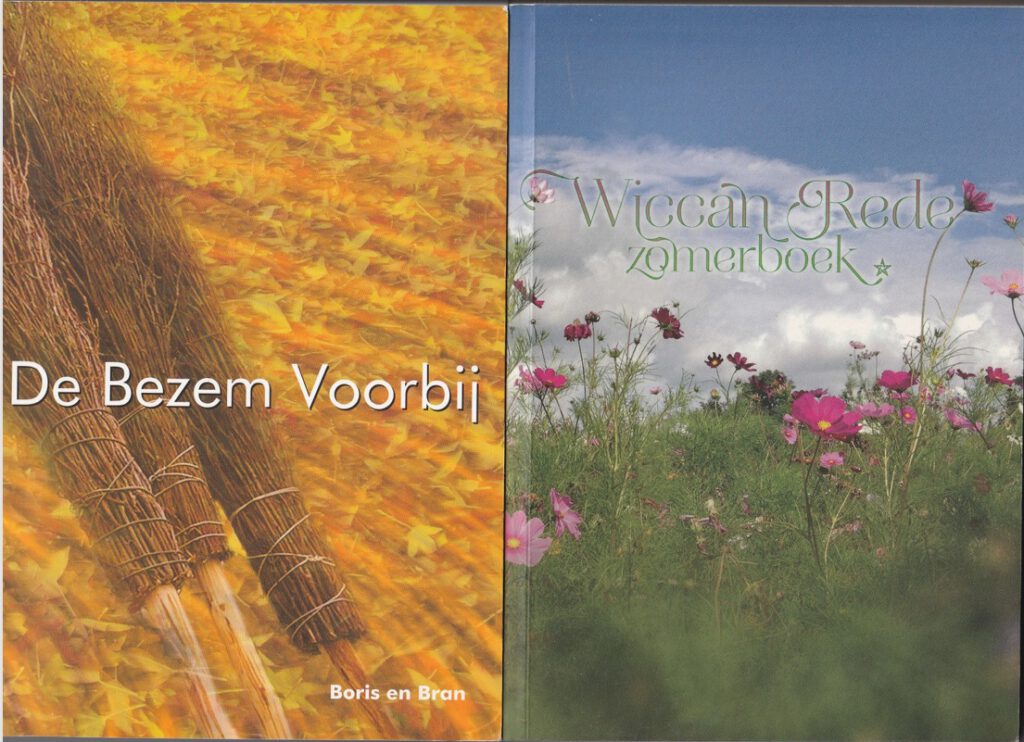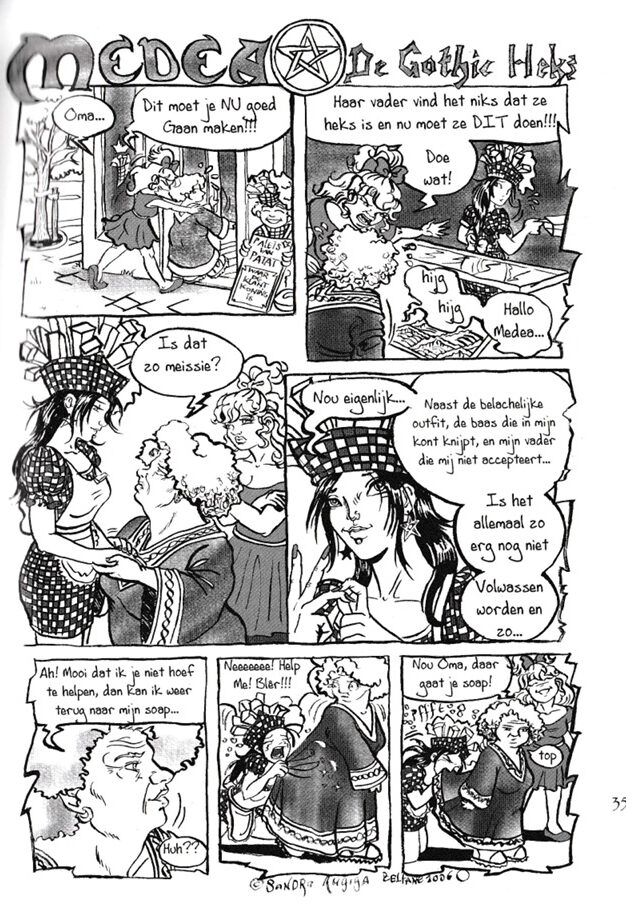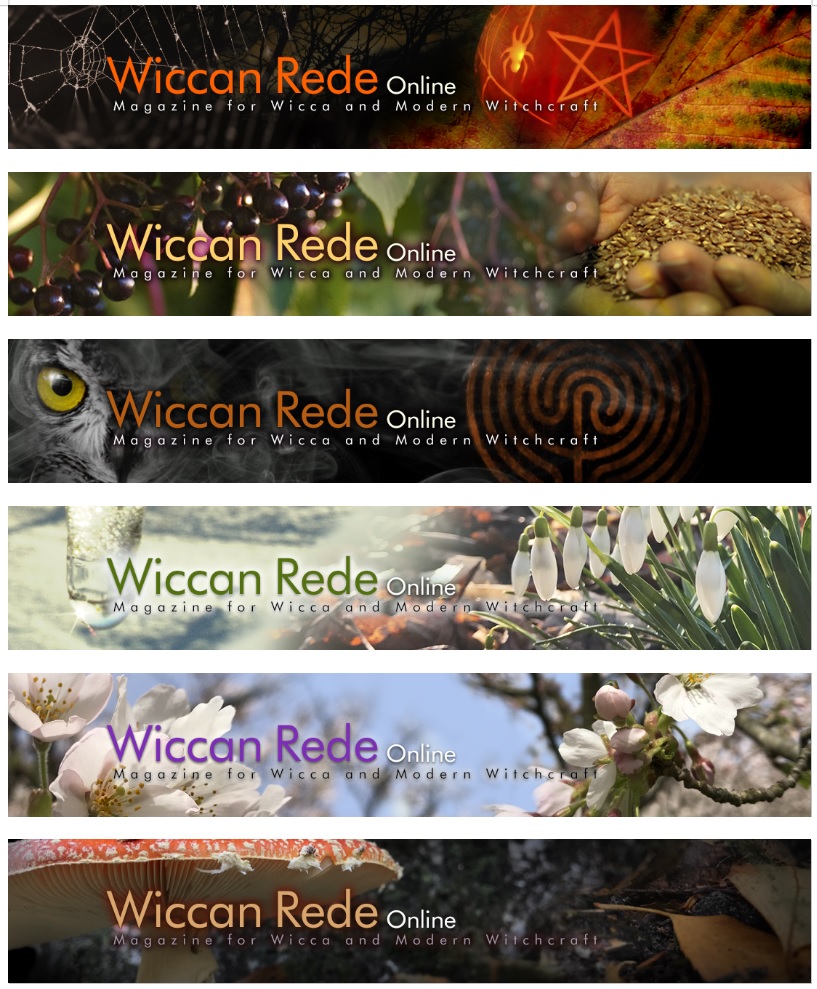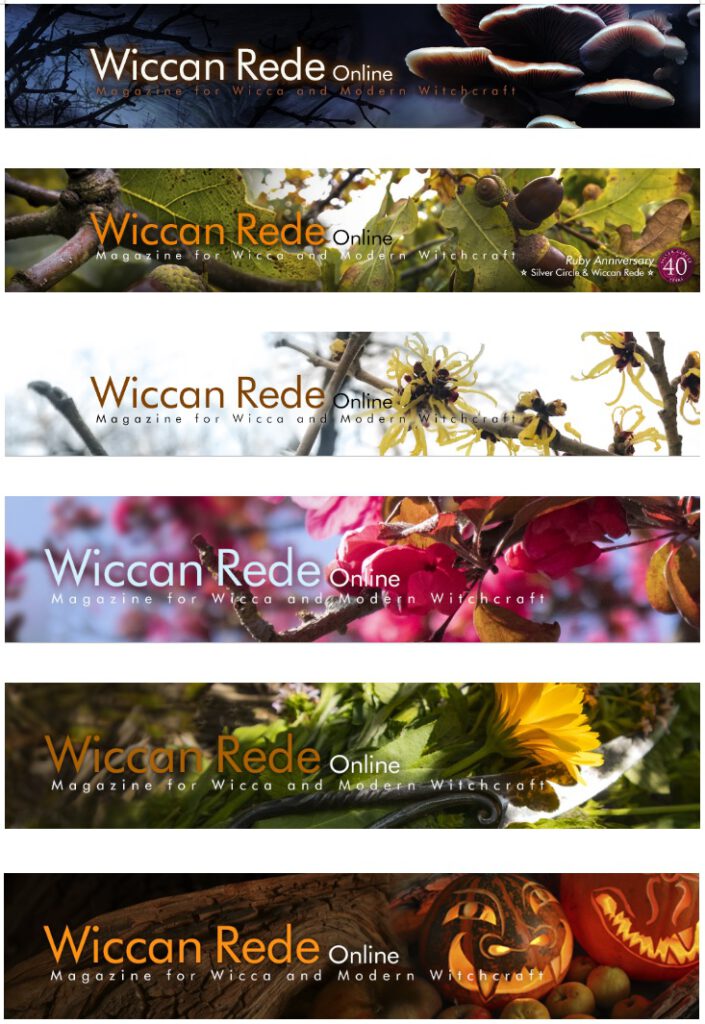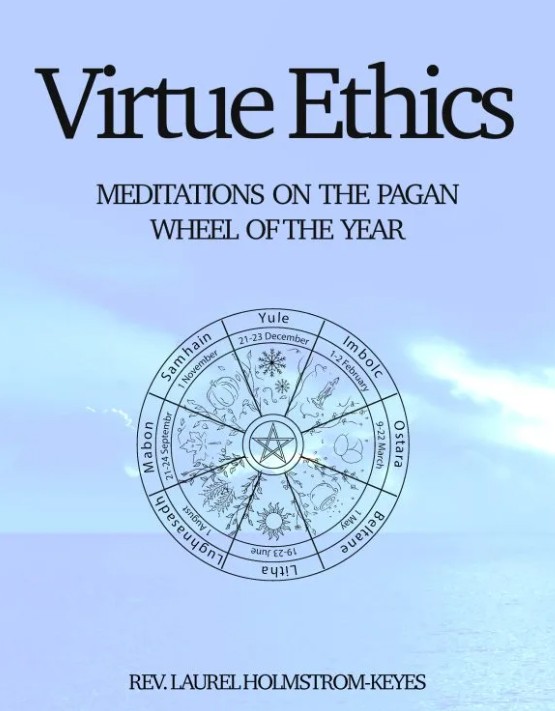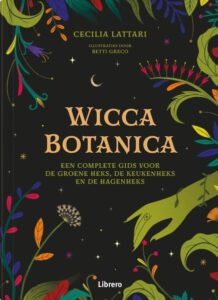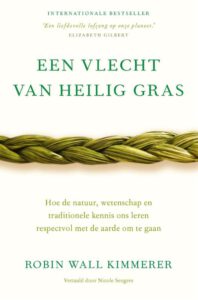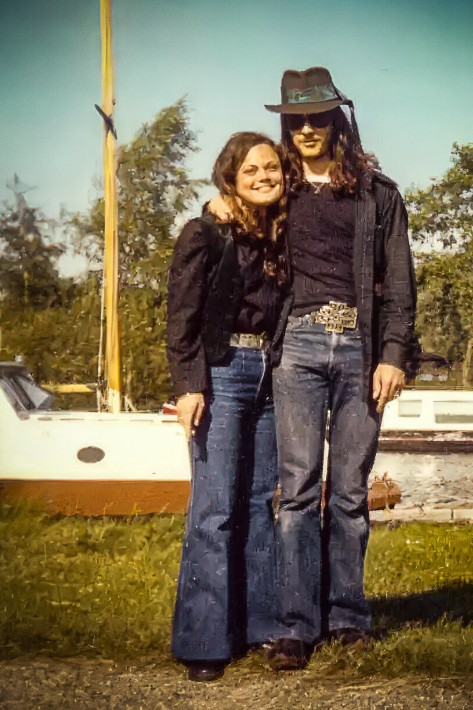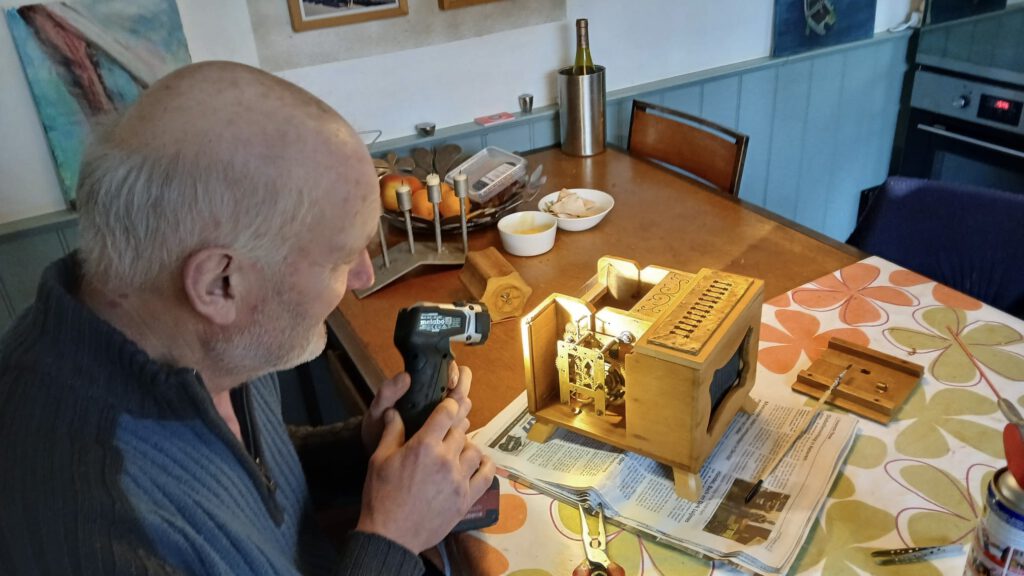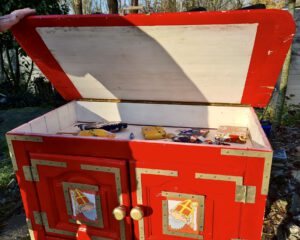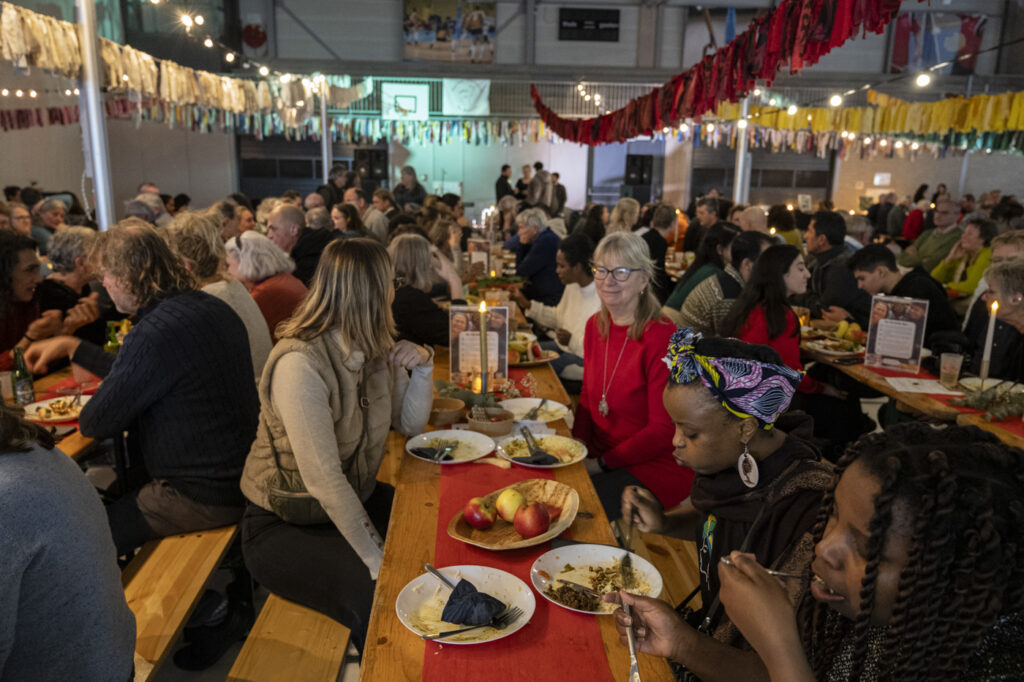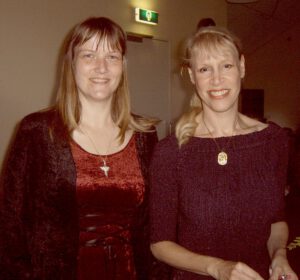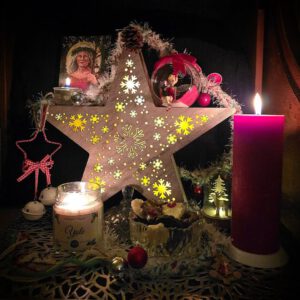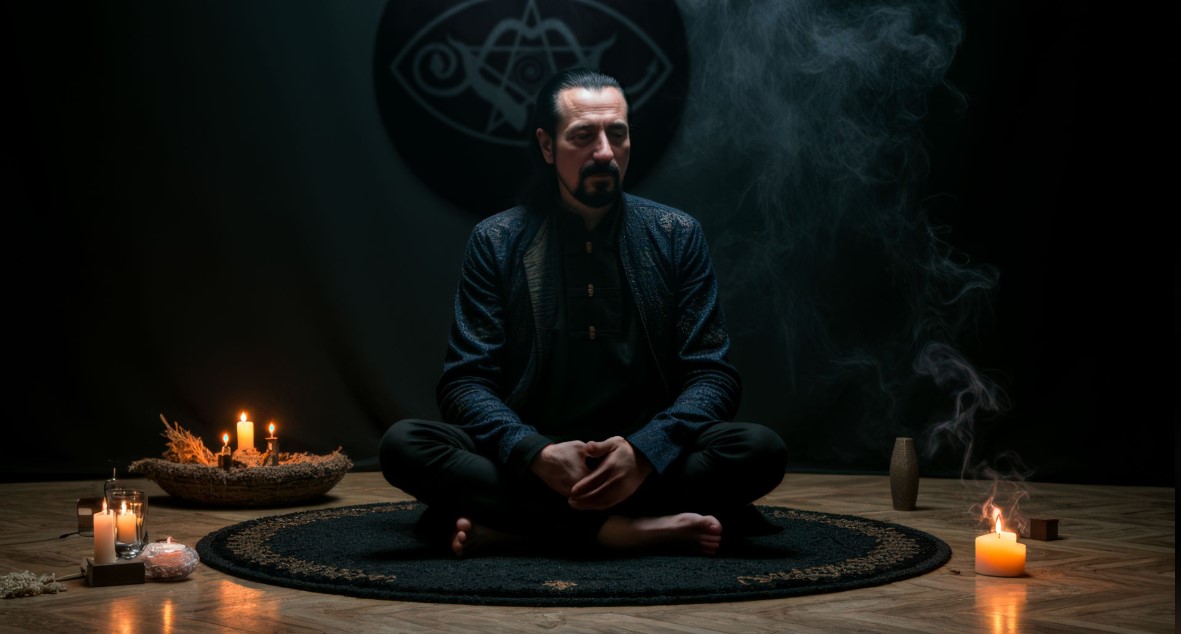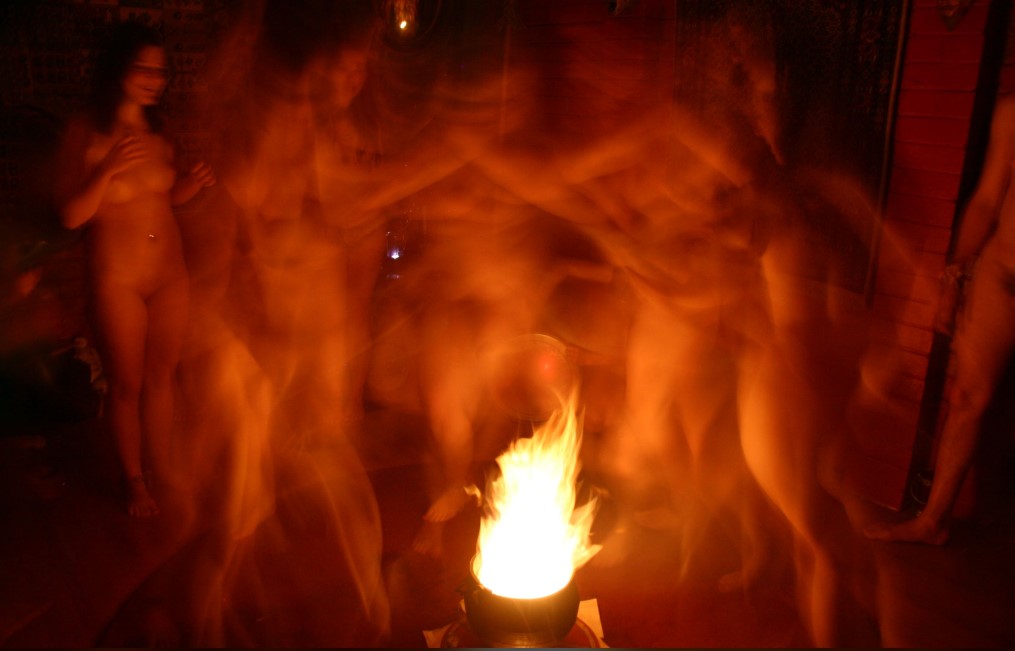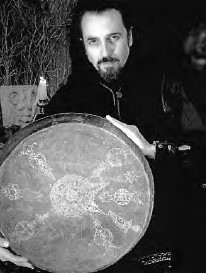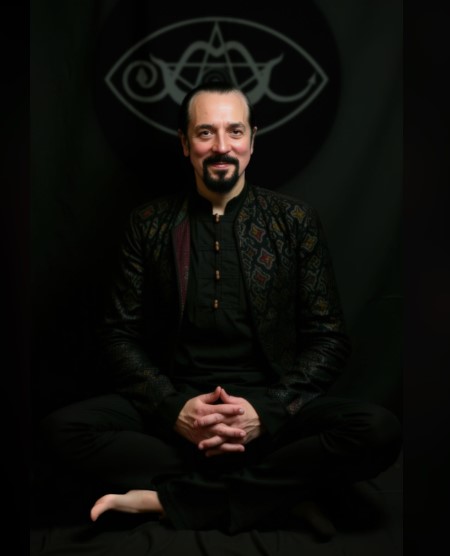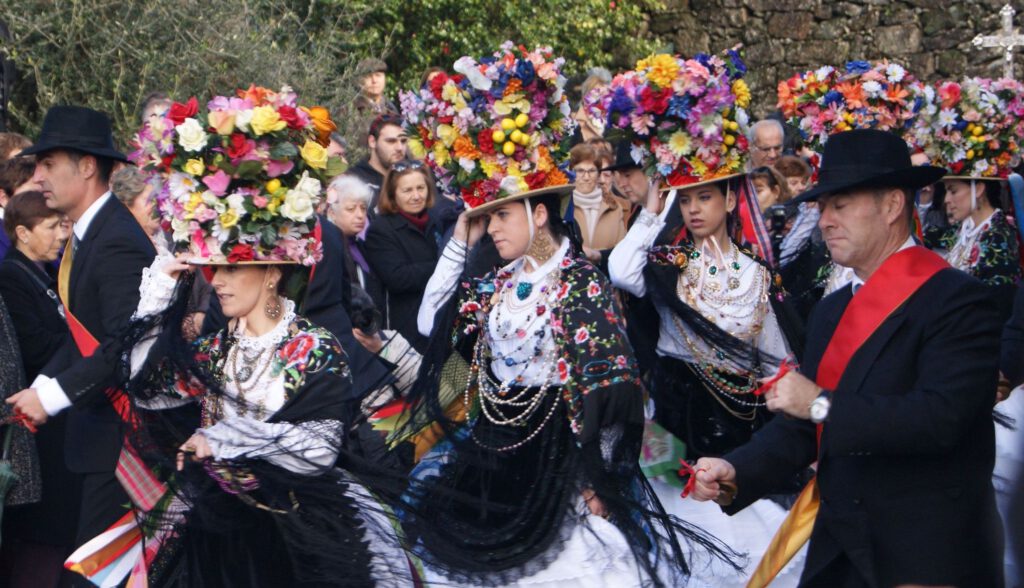To celebrate the anniversary we held a meeting at which a presentation was given of 45 years of Wiccan Rede, from paper to digital. This article is a written version of the presentation, with some of the images.
It all started with a 2-page newsletter, ‘Yuletide 1979’ in folio format. It was bilingual from the beginning: an article on Winter Solstice in English, and an explanation of Paganism in Dutch. Wiccan Rede was an experiment, and the reader was asked to get into contact.
‘Wiccan Rede’ is still an experiment. Both in England and in America there is a large number of magazines that have Wicca, paganism and the Western occult tradition as their subject. As far as we know, there is no such thing in the Netherlands yet, but we are convinced that many people in the Netherlands are also interested in Paganism. Wiccan Rede is a first attempt to bring these people together.
We deliberately chose a combined English-Dutch form, for several reasons. Dutch, because we live in the Netherlands, although we ourselves are bilingual; English because almost all literature in this area is English.
The second flyer dates from Imbolc 1980. Imbolc/Candlemas is interpreted in English, and the explanation of Paganism is continued in Dutch. A news section gives some titles of books and magazines. The complete list will be sent to everyone who sends two stamps of 50 cent (compare to the English ‘SASE’, the Self Adressed Stamped Envelope) to the mailbox in Bilthoven.
And then the first multipage issue of Wiccan Rede is published in Spring 1980, in A4-size, with red cover, and, like both flyers, illustrated by Merlin.
He calligraphed the titles of Wiccan Rede, of the news section and many of the articles and often made a nice drawing of the capital letters. The illustration shown here is from the third issue, Autumn 1980, with a white cover. The header ‘Wiccan Rede’ with the bat is the same as on the flyers.
Not only is Wiccan Rede bilingual since the start, but it has from then on been directed to both (the philosophy and practice of) Wicca and occultism, more in general. And towards more traditions than just Gardnerian wicca.
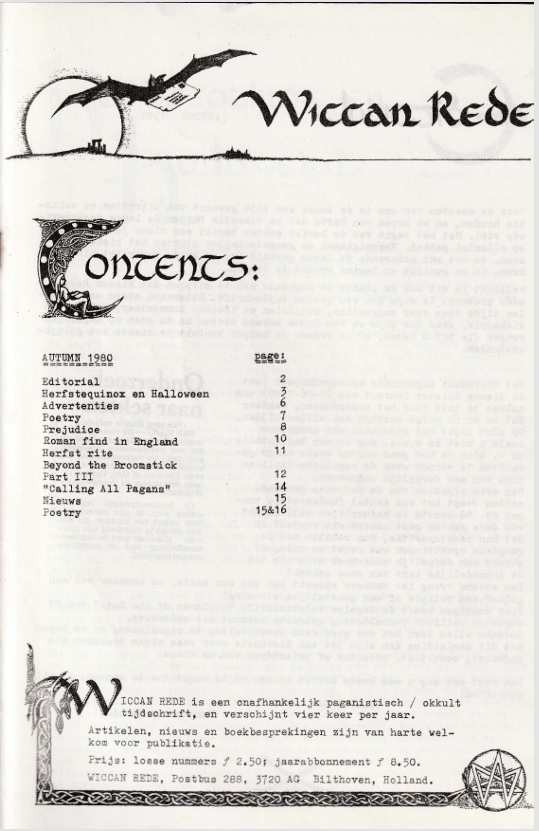
Wiccan Rede (here the third issue of more pages than two, Autumn 1980) is an independent pagan / occult magazine, published 4 times per year.
The illustrations below make it clear that Morgana wrote the series ‘Beyond the Broomstick’, and Merlin wrote a series on the ‘magical weapons’ of the witch. And that Dolores Ashcroft-Nowicki in an early stage published her series ‘There’s a Rite Way to do it’ in Wiccan Rede. The poetry mentioned in the Autumn 1980 index was by Angela Barker, and in the Summer 1980 issue Tamar called upon all pagans to support Greenpeace. In that edition adds were placed for/by Occultique (shop), Sut Anubis (magazine), Mark Saunders (postorder bookshop) and the magazine The Cauldron.
In the Winter 1980 issue the editors – Merlin and Morgana – look back on a ‘very fruitful’ year. There had been interest from the Netherlands, Belgium, England, Finland, France, Israel, Ireland, Switzerland and Australia. Money turns out to be a problem. The subscription price is raised to 12 guilders a year. “Do you find symbolism important? 13 guilders is acceptable as well!”
Morgana starts the ‘Mara Papers’ series, also meant to bring interested people into contact with each other.
In the Summer 1981 issue the adds are complemented by those of Isian News (by the Fellowship of Isis), the Dutch ‘Ga-al-la Keltic Center’, Quest (Marian Greens magazine on magic, that already existed before Wiccan Rede and still exists today) and the magazines The Bard and The Crystall Well.
On the Spring 1982 cover the scoop is that Wiccan Rede has moved (and so have its publishers) to Zeist. The first ‘meet and greet’ is organised, in the Rijksmuseum voor Oudheden (National Museum of Antiquities) in Leiden. The idea is to meet in the museum restaurant, but a coffee machine on the first floor is the only thing close to a restaurant. A report mentions the after-party in pancake house ‘Oudt Leyden’. This was just before I, Jana, got a subscription to the magazine. I met Jan and Diana another way, but they were the ones who mentioned the magazine, and advised me to subscribe to it and to order the previous issues. Which I did.
In Summer 1982 the magazine ‘Pipes of Pan’ advertises in Wiccan Rede and it is announced that the booklet ‘Twijgen uit de bezem’ (Beyond the Broomstick) can be ordered. Andy Highfield contributes ‘additional notes’ to Merlins earlier article on the Broom, and next to news from the Netherlands, Georges brings the news from Flanders for the Belgian readers.
The illustrations show the adds on the inside cover (front and back) in Autumn 1982. Morgana starts a series ‘Borderlines’.
In May 1983 the booklet ‘Heksenkring’ is published in Dutch, with visions on wicca and witchcraft by several authors. Later it is published in English as ‘The Tapestry of Wicca’. Jan (also known as Magnus) and Diana, Dutch witches having their own tradition, write several articles.
The Autumn 1984 issue is the first to be published as a folded booklet in A5 size. Ronald contributes for the first time. Silver Circle sells incense and books as a small postorder business.
In the Summer of 1985 Wiccan Rede is not published, because of happy circumstances. The nature of those circumstances is revealed in the Autumn 1985 edition: it includes the birth announcement of daughter Rhianne. Merlin starts the series ‘Pagan Parenting’. Jana and Kees Poek write their first articles. Both will write many articles in the years to come. In Winter 1984 the Silver Circle Moon Calendar is introduced, plus the booklet ‘A year and a Day’.
In the spring of 1985 a report is given of a survey among the readers. About 20 percent responded, almost all from the Netherlands or Belgium, and in general they were positive about the entire magazine or parts of it.
Most of them read everything, sometimes twice. A few cannot read English. Highly valued are the articles on magic, training, pagan philosophy and personal experiences. Less valued are articles on witch hunts and history.
We see a first division between those interested in the area of magic, and those more interested in Wicca and philosophy.
That dichotomy is even more clear as answer to the question whether Wicca or the occult should get more attention:
Half the people wanted to see more mentioning of magic, kabbalah and occultism, the other half wanted to see more articles on Wicca proper, not just the philosophy but practical matters as well.
When asked whether the readers are personally involved, it turns out that roughly half of them are more or less active, celebrating the festivals and such, or at least have a serious interest. The side activities of Silver Circle (open meetings, booklets, possible workshops or other meeting possibilities) are appreciated, but certainly not instead of Wiccan Rede. The magazine “is clearly experienced as a connecting element that goes beyond the specific content of the articles or news”. The greatest compliment comes from someone who not only read the books by the Stewart and Janet Farrar, but knows them personally and intimately:
One of the reasons why I get the Rede is its professional, precise and informative view on the Ancient Ways. I sometimes wish I could understand Dutch in order to get more from it. A lot of mags seem to be very weak in content, and take the opportunity to bitch.
The ‘exchange listing’ in the Spring 1986 issue contains: The Bard, The Cauldron, Circle Network News, Earth Song, Faerie Fire, Isian News, Kindred Spirits Quarterly, Pagan Parenting Network Newsletter, Pagans Against Nukes, Panegyria, The Rune, Stormclouds and The Wiccan. Adds promote the booklets of Silver Circle, plus a free magazine by publishing company Llewellyn and the “beautifully illustrated catalogue” of Elfane / Bel Bucca, who carves art from wood, such as statuettes of Goddess and God. Morgana starts the series ‘Elementals’.
The Spring 1988 edition has a new font. That symbolises the introduction of ‘high tech’: Wiccan Rede is ‘computerised’. New booklets are available: ‘De horens van de maan’ (Horns of the Moon) and ‘Between the worlds of gods & men: a basic training in magic’ (December 1987).
The Spring 1988 magazine contains the article ‘The Wheel of Life’, in my opinion one of the greatest contributions of Silver Circle to the philosophy of Wicca. Merlin:
Sometimes, in the many discussions we have, Morgana and myself take a close look at some of the most obvious things in Craft philosophy too. And as it happened, some time in December we were talking about Yule, and the birth of the Sun God. Suddenly Morgana said: “Actually, if you look at it from a very pragmatic viewpoint, it is silly to celebrate a birth right at the beginning of Winter. Candlemas should be the festival when birth is celebrated – it certainly is the time when physical birth is manifested in nature around us!” With this event as a starting point we’ve had a number of brainstorms since then, and this article gives some tentative results.
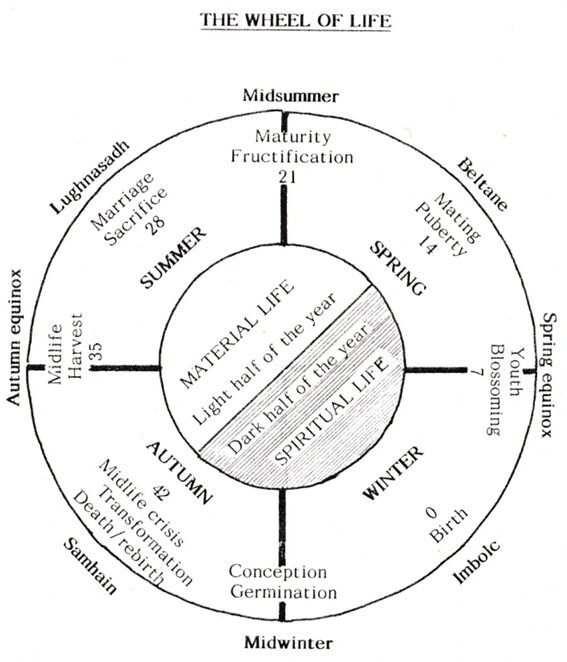 I disregard a whole lot of A5-booklets (in red or sometimes yellow cover), but would like to mention some of the authors who contributed more than one article: Anthony Link, Atlan, Befana, Boris, Dominick, Gardenstone, Gerry, Iris, Karin, Ko, Lucia, Phaedrus.
I disregard a whole lot of A5-booklets (in red or sometimes yellow cover), but would like to mention some of the authors who contributed more than one article: Anthony Link, Atlan, Befana, Boris, Dominick, Gardenstone, Gerry, Iris, Karin, Ko, Lucia, Phaedrus.
‘Autumn 2002’ is the last of the sixty magazines in this size and format. In the end we already encounter the ‘events calendar’, ‘Arachne’s Web’, which is at that time more a series of personal contact adds, often by Alexandrians, but also points towards Silver Circle, Centrum Aradia and Green Circle.
With the new layout comes a new editorial team. Some of the regular contributors in the Autumn 2002 issue are not just not-Gardnerian, but not at all from ‘British traditional witchcraft’: Daturae and Irina Tudor.
In the first issue in the new layout, Imbolc 2003, the staff is introduced: Daturae (Dutch Pagan from Groningen, in the North), Irina (born in Romania, interested in Goddess wisdom, women’s spirituality et cetera, from the South of the country), Mandragora (our one and only layout woman), Merlin, Morgana, Jana.
Notice that the publishing date of Wiccan Rede shifts from ‘Spring, Summer, Autumn, Winter’ to Imbolc, Beltane, etc. That is because of the production time of several weeks, because the printing of the magazine is now outsourced.
In the presentation the whole range of 31 booklets in this format was shown with all the covers and a part of the content. These covers can be seen in an older article, from a previous jubilee: Wiccan Rede in boekvorm, 2003-2010.
The covers, covering front, back and the small side of the magazine, show that the covers have a yearly theme. These are the back covers of the 2005 series, with the alchemical symbols of the elements: the triangles.
Our other products are the Silver Circle Moon Calendar, the correspondence course, booklets, and a video plus booklet in Dutch and in English (with also subtitles in Spanish).
Yoeke starts contributing around 2006/2007. Before that Flora wrote columns, and maybe this is a good moment to draw attention to the articles of Don (in the oldest volumes) and Felicia (in the latest paper issues) about herbs.
From Beltane 2003 up to and including Samhain 2007 Sandra Augiga contributed her comics on ‘Medea, the Gothic witch’.
From 2010 on Loes contributes her reflections on her Full Moon walks. Flierefluiter starts his contributions. Since the Lammas 2010 issue it is Medeia who writes the news section. And that is the last issue to be published on paper. The costs of printing and posting are too high, and we loose readers because the renewal of a subscription asks for an action that not everyone performs straight away (and some forget to renew at all).
It takes a bit of time before we have figured out how to continue online, but in ‘Winter 2010’ Wiccan Rede Online is a fact. That is thanks to Morgana, Jana, Medeia, Loes, Yoeke, Serotia and Rhianne, and – last but not least – designer Mandragora. Some of her headers are shown below.
Merlin pulls back as editor-in-chief. He plans to write articles later, but sadly he becomes ill and dies (January 2012).
Morgana becomes the publisher and Jana the editor of the online edition. Online, next to the articles by the staff, we receive contributions by Alder, Flierefluiter, Gerry Damen, Ishtar, Lothanna, Nemain Cumbran, Serge, Thorn Nightwind and many other authors.
I want to thank everyone who has made the existence of Wiccan Rede (Online) possible by subscribing, writing articles, reviews et cetera, by making illustrations, writing reactions, donating, or by any other means. Without you we would not have been able to exist for 45 years, and to be one of the oldest, if not THE oldest, still existing magazine on Wicca in the world!

